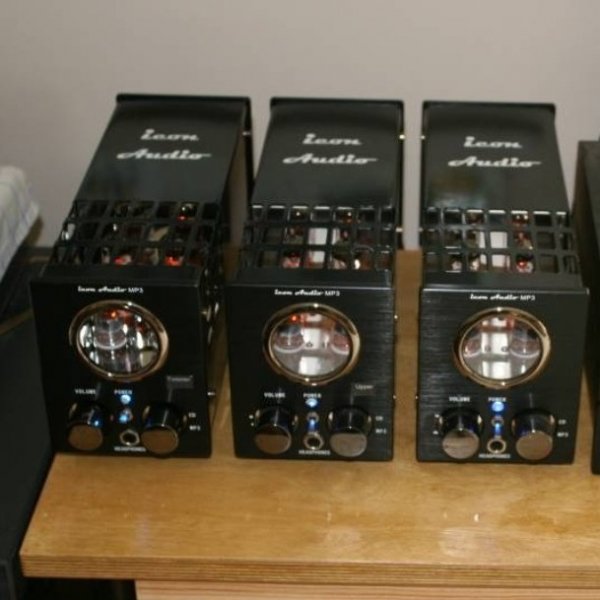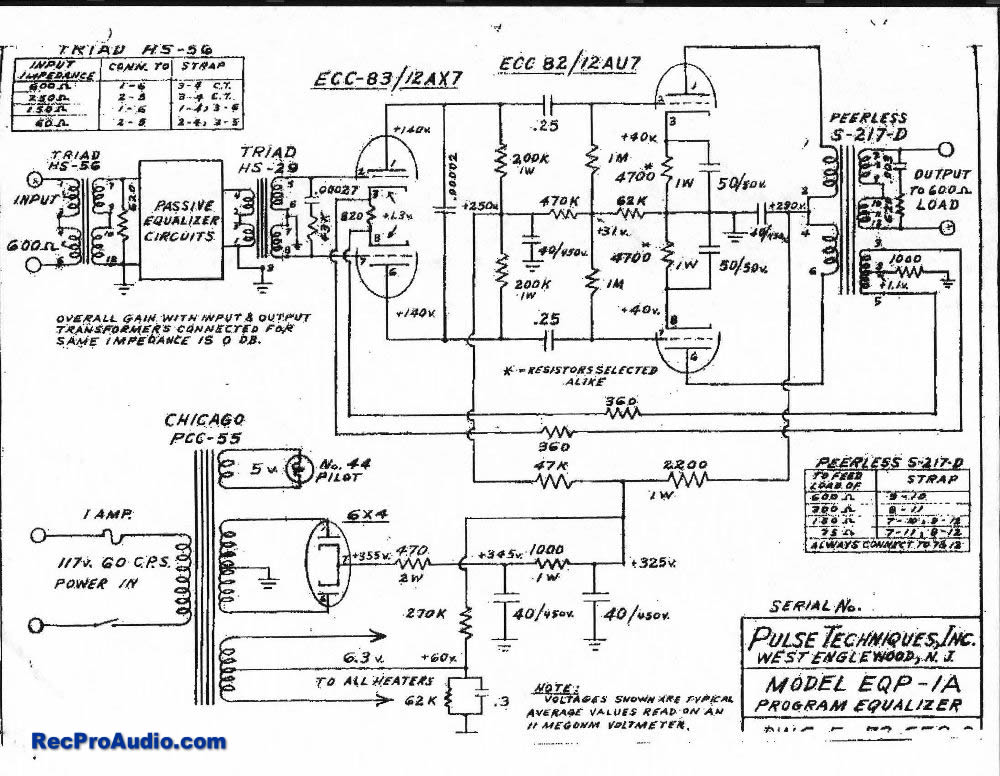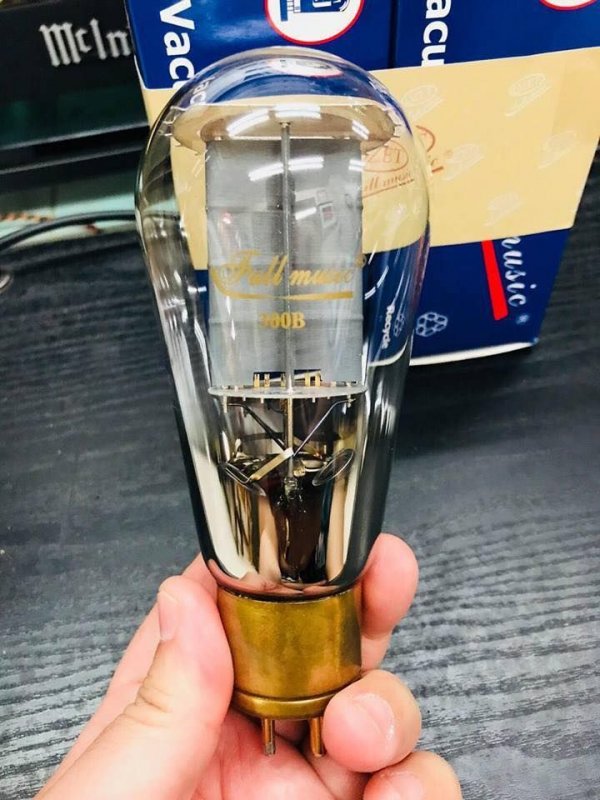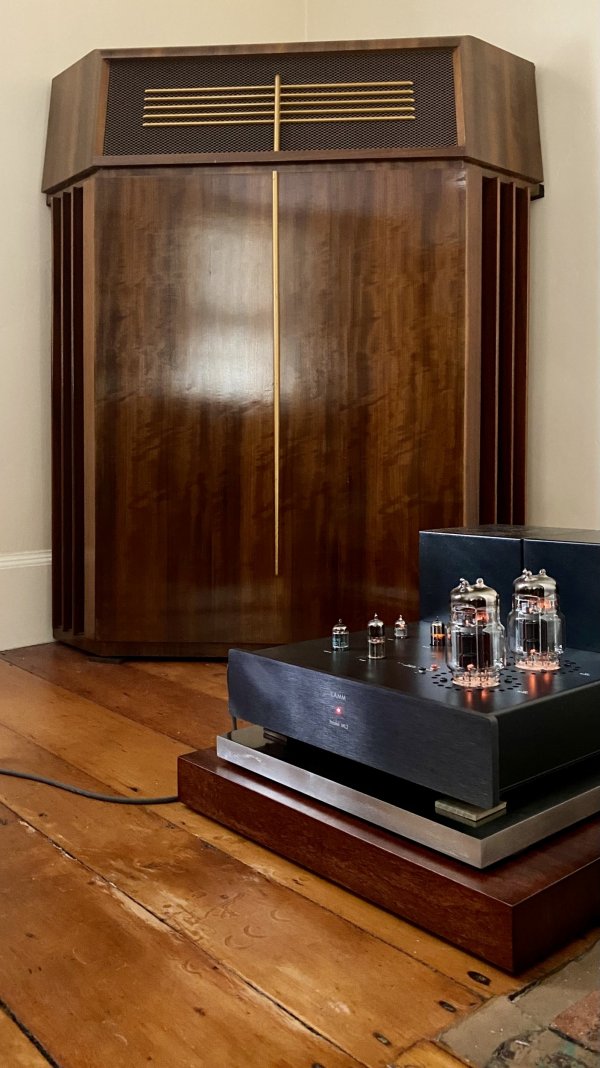Great paper, in regards to feedback it seems to say the exact opposite to what Atma-Sphere claims.An interesting paper on the topic of this debate: https://next-tube.com/articles/Cheever/cheever.pdf
SET amp owners thread
- Thread starter bonzo75
- Start date
You are using an out of date browser. It may not display this or other websites correctly.
You should upgrade or use an alternative browser.
You should upgrade or use an alternative browser.
Yes and I have been discussing this with Ralph for at least 5 years.Great paper, in regards to feedback it seems to say the exact opposite to what Atma-Sphere claims.
Keep Up Back There … We are on the Class D Gravy Train Now !Great paper, in regards to feedback it seems to say the exact opposite to what Atma-Sphere claims.
This train has several square wheels. Can triangular...Keep Up Back There … We are on the Class D Gravy Train Now !
Pay attention to what Cheever says on pages 10-14 about Norman Crowhurst.Great paper, in regards to feedback it seems to say the exact opposite to what Atma-Sphere claims.
He left out something vital which Crowhurst wrote about in the same writings as the stuff that Cheever was talking about re. Crowhurst.
That bit was the fact that the feedback is being applied to a non-linear point in the amp under test. I've mentioned that many times in the past but somehow this point doesn't land or gets ignored (possibly to make an argument for zero feedback). Crowhurst was the first to point this out but offered no solution, although as we see below, its pretty simple.
Put another way all the amps of Cheever's paper have a design flaw which is the feedback signal gets distorted before it can do its job. This is sort of like playing 'telephone' with the feedback signal and then acting like its actually going to work right. Sheesh.
That is why I've discounted that paper. Its a red herring; it describes what's wrong with the amps he measured rather than what's wrong with feedback.
Put yet another way if you apply the feedback to the cathode of an input tube it won't work right. Plain and simple. So expect the harmonic noise Crowhurst wrote about if you do.
The way to do it is to mix the feedback with the audio signal at the input of the amp. Resistors are a lot more linear than the most linear tubes to you don't play telephone with the feedback signal. This really helps getting feedback to do its job. This is the way opamps use feedback. I have no idea why this solution has not seen more widespread practice in the audio world but so much of audio is based in tradition like so many human endeavors. FWIW this is how we've applied feedback in our OTLs.
Guys, there is a dedicated thread I opened for you to discuss theoretical stuff.
Please go there and leave this thread to it's topic
Please go there and leave this thread to it's topic
Last edited:
I have 3 X 5wpc EL84 SET amps on the upper channels.
mid horn 118dB/W with horn,
upper mid horn 115dB/W with horn
Ribbon tweeter 111dB/W
They hardly have to work at all!
When I had an early incarnation of my system in a big demo room they played very loud indeed still not stressed.
Very quiet in operation. No audible hiss unless you stick your head right into the horns

I've tube rolled to find the ones I like and changed the signal caps. That's it.
Had them 10 years now. Very happy with them.
mid horn 118dB/W with horn,
upper mid horn 115dB/W with horn
Ribbon tweeter 111dB/W
They hardly have to work at all!
When I had an early incarnation of my system in a big demo room they played very loud indeed still not stressed.
Very quiet in operation. No audible hiss unless you stick your head right into the horns

I've tube rolled to find the ones I like and changed the signal caps. That's it.
Had them 10 years now. Very happy with them.
Last edited:
There are several reasons and ways to apply feedback. Most forms are used for gain control (by negative feedback).Great paper, in regards to feedback it seems to say the exact opposite to what Atma-Sphere claims.
Well in an unbalanced self biased grounded cathode it might, but in a differential pair circuit no, it wouldn't and that is a standard circuit in the Pulse Pultec Eqs.Put yet another way if you apply the feedback to the cathode of an input tube it won't work right. Plain and simple. So expect the harmonic noise Crowhurst wrote about if you do.

Fun circuit! Balanced, but not differential. What does it equalize? Note how the input and output are floating with no ground reference. That is how balanced line is done properlyWell in an unbalanced self biased grounded cathode it might, but in a differential pair circuit no, it wouldn't and that is a standard circuit in the Pulse Pultec Eqs.
Again the way to mix feedback is not in an active device like we see here. The tube isn't linear so when the mix happens the feedback signal is distorted by the tube.
If you do it the way you see opamps do it you get less higher ordered harmonic generation and almost no IMD by comparison.
You can do that in this circuit:
The feedback resistors are also used along with the 1K resistance to ground at the center tap of the feedback winding to set the operating point of the 12AX7. I would start by tying the cathodes of the 12AX7 together and having a single resistor from there to ground; about 1.2KOhms, discarding the 820Ohm resistor seen in the cathode circuit right now. The feedback winding would then be applied to the grids with a series resistance for each side. There would need to be a series resistance (perhaps 4.75K) from the input transformer to the grids of the 12AX7. This will not affect the loading values seen across the secondary of the input transformer, which provides nearly all of the CMRR of the circuit. You would also have to invert the phase of the feedback winding because the grids are inverting inputs to the tube. You could use a stereo pot to set the feedback level empirically by setting the gain to the same value as before.
Whose setup is this? Is there distortion in the pic or are the outside curves of the bass horn wider than the insides?Man this was crazy. Like best along with Yamamura. All hand made, playing solo to Mahler to rock each better than anything and only with a dual 701 and Shure V15. Best weight and impact I have heard, integration, and brilliant highs and midrange
View attachment 123415
Whose setup is this? Is there distortion in the pic or are the outside curves of the bass horn wider than the insides?
a friend of Hiraga’s. The bass horns are bespoke, so bigger than the 817 that allows him to close the vent.
Honestly I don’t remember. Will check that when I revisit
Hi I am just working my way through this very interesting thread....again.Yes, I completely agree with this. Over more than 20 years of continuously having various 300B amplifiers in my amps rotation, I've tried every significant tube. Like overdosing your Manhattan with too much red vermouth so the vermouth steps on the whiskey, most of today's 300B tubes rewards a palate that likes a sweet, sticky midrange with a little bloat in the bass. Now I don't have any argument with someone who chooses that sound, knowing that's what they want and are getting. But if you are seeking more objective sound, with agile articulation, speed and definition in the bass region and a not-euphonic top end so you get music that is harmonically complete, there's really only the KR 300B. Everything else, including the various Sophias, the TJ equivalents, the Shuguangs, Treasures, Psvane, neo Gold Lion, JJ, Takatsuki, EML, WE, WE replicas, etc. sound comparatively colored, all in various attractive ways, but also in ways that are both additive and subtractive to a more neutral musical truth. Easily the most disappointing was the Takatsuki, after all the hype, audiophile worship on various forums, and reviews. A superbly-crafted valve that in the half dozen amps I tried it in, yielded that old-school, oversmooth, edges-sanded, lifeless, boring sound. At twice the price of the KR in the US. One thing I haven't heard is the USA special edition KR 300B that sells for about 50% more than the standard balloon glass tube.
Now you can give me a voicing profile you might want to attain through 300B amp tube selection, and I can probably recommend something specific. But if you want open, honest, broadband sound from a 300B, with bass discipline, shove, spatial projection, energy, definition, snap, top end harmonic completeness yet still deliver the 300B midrange magic. the KR is pretty much in a class of one. For a much cheaper step-down but very competent tube (and I surprise myself when I write this) I'd probably go with the Electroharmonix Gold Grid 300B.
Phil
I appreciate your comments and your experience with 300 b tubes. So a few years have passed since since March 2020, do you have any updates to your recommendations?
Its a Pultec mastering EQ. They are about $5000/ch. Sometimes, they run this eq in bypass just to add some tube air to the signal.Fun circuit! Balanced, but not differential. What does it equalize? Note how the input and output are floating with no ground reference. That is how balanced line is done properly
Hi I am just working my way through this very interesting thread....again.
I appreciate your comments and your experience with 300 b tubes. So a few years have passed since since March 2020, do you have any updates to your recommendations?
a friend who has the KR, Elrog, EML XLS, Takatsuki, and Western electric reissues preferred Mayer's ER-300b MO (molybdenum) most on his Alieno. I haven’t compared that one yet. They are made in small quantities to order so difficult to get and expensive.
Last edited:
I believe that the circuit has to be considered with the evaluation of tubes. For example, the best tube I have in my three stage 300b amps are the standard EM Labs. The Elrog was boring and slightly vailed.a friend who has the KR, Elrog, EML XLS, Takatsuki, and Western electric reissues preferred the Thomas Mayer 300b most on his Alieno. I haven’t compared the TM 300b yet. They are made in small quantities to order so difficult to get and expensive.
I also found the em labs excellent, my personal favorite tube is the tj 300b globeshape with ecf 82 driver. Unfortunately, it is today only available as an expensive cne version for 1000$ pair.I believe that the circuit has to be considered with the evaluation of tubes. For example, the best tube I have in my three stage 300b amps are the standard EM Labs. The Elrog was boring and slightly vailed.

Last edited:
Wow that’s a cool looking SKU.I also found the em labs excellent, my personal favorite tube was the tj 300b globeshape with ecf 82 driver. Unfortunately, it is only available as an expensive cne version for 1000$ pair. View attachment 124900
Similar threads
- Replies
- 16
- Views
- 2K
- Replies
- 4
- Views
- 974
- Replies
- 0
- Views
- 646
- Replies
- 15
- Views
- 1K
| Steve Williams Site Founder | Site Owner | Administrator | Ron Resnick Site Owner | Administrator | Julian (The Fixer) Website Build | Marketing Managersing |
















